How To Make Fermented Vegetables
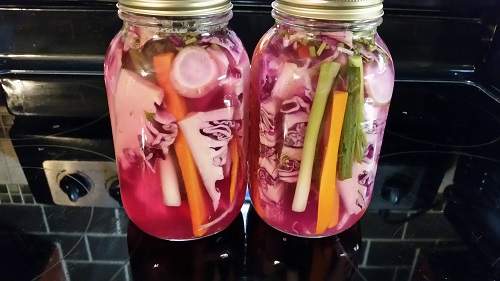
Woah what the heck are these things? Fermented vegetables my friend - and you definitely want to get in on this action. Let me introduce this recipe by first telling you that fermenting vegetables is easy. Really easy. Almost as easy as not doing the dishes for about a week. Just throw this together and let it sit on your counter for a week or so. It does not get a lot easier than this unless your food spontaneously develops locomotion and crawls itself into your mouth for you.
In addition to being dead simple to make, fermented vegetables are extremely important for the development of good gut bacteria. Fermented vegetables are a probiotic that you are making yourself. I used to eat yogurt laden with sugar thinking that it must be good for me because people talk about the positive benefits from yogurt. When you are ready to step into the big leagues with your probiotics you start making your own fermented vegetables and eat them every single day.
* You can use almost any vegetables for fermenting in addition to the ones listed in this recipe such as broccoli, cauliflower, asparagus or pretty much anything else you can think of. I had a ton of cabbage cores left from making sauerkraut using this same pickled vegetable recipe and so I used them in these jars. The finished result, a cabbage core pickle, turned out so crunchy and delicious I was shocked. I had no idea you could make fermented pickles out of cabbage cores, but you can, and they are awesome!
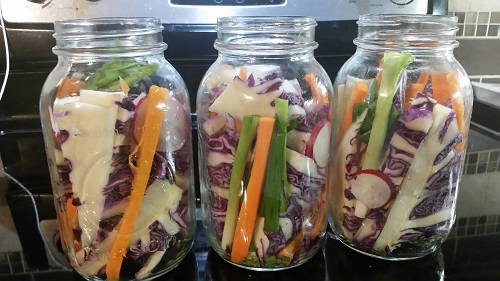
Prep time
30 minutes
Cooking time
5 to 10 days at room temperature
Recipe yield
12 servings (3 large jars)
Ingredients needed
3 carrots
6 green onions
3 red cabbage cores
6 radishes
2 liters of bottled water (2.11 quarts)
3 tablespoons of pickling salt
What you need to know about this fermenting process is that it is hard to get it wrong. Salt brine fermentation of vegetables is one of the oldest, and safest, forms of food preservation known. You will be good to go as long as you remember just a few important tips. The first and most important tip is that the vegetables must be completely submerged and covered with the salt water. If left exposed above water level the veg will rot instead of fermenting. The other tip is simply to be careful with your salt and be sure to observe the ratio of 1.5 tablespoons of pickling salt to every 1 liter of water. Simple stuff!
Step 1 - Dissolve 3 tablespoons of salt into 2 liters of water
Step 2 - Wash, peel and chop vegetables into bite sized pieces
Step 3 - Pack mason jars tightly with vegetables leaving at least one inch of space empty at the top of the jar
Step 4 - Fill jars with salt water so that all vegetables are covered completely
Step 5 - Close lids and store jars out of direct light
Step 6 - Open jars to burp the gasses that form at least once per day
Step 7 - After 5 to 10 days at room temperature refrigerate the jars
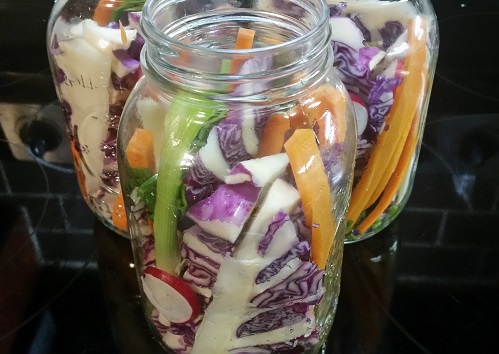
The liquid in the jars will turn cloudy as the fermentation process takes place. Each day when you crack open the jars to let the gasses vent the jars will bubble vigorously. This will slow as the fermentation process nears completion. How long you leave the vegetables at room temperature depends on how sour you like your pickled vegetables to taste. Feel free to open the jars and steal samples as the days go by. The vegetables will continue to ferment even after refrigeration, albeit at a much slower rate, so they will also continue to sour once you refrigerate them.
Burping the jars...is not great. My wife and I call the area where we burp our fermenting vegetables the "fart chamber". If you can get past this part then you are going to love these fermented vegetables. They will last up to six months or so in the refrigerator. These vegetables are not shelf stable so do not leave them long term at room temperature or, I assume, the jars would eventually explode! You can just make the vegetables that you like best or you can mix and match like I did with these cabbage core pickles, radishes, green onions and carrots. Of course you could always go with the most tried and true fermented vegetable - cucumbers of course! The addition of dill and garlic to any of these fermented vegetables will result in powerful pickle-like flavors in the finished product.
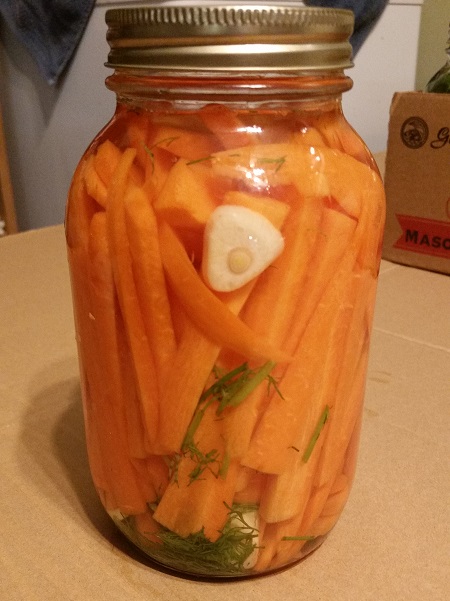
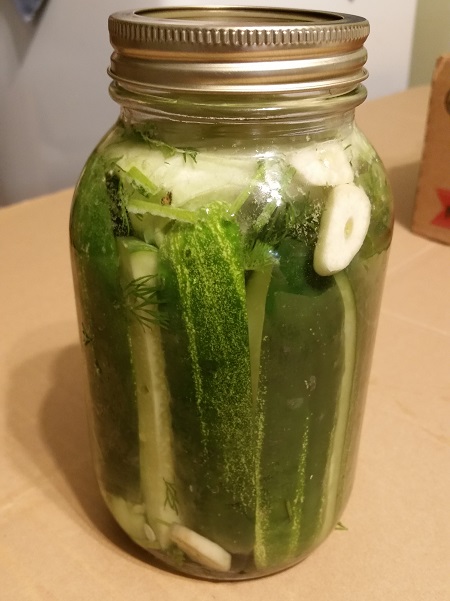
The CookForMeBaby.com blog
Life with MCTD
Autoimmune protocol recipes

About the author - Steve Goodale is a blogger and technical specialist from Ontario Canada, winner of the 2018 Industry Leadership Award, who reaches over three million readers per year with his popular pool and spa blog. Steve started the www.CookForMeBaby.com blog about healthy eating after being diagnosed with a rare and incurable autoimmune disease. You can read more on his story about life with MCTD here. For more healthy cooking inspiration check out his other delicious recipes.
Copyright © 2018 - All Rights Reserved - www.CookForMeBaby.com
Template by OS Templates